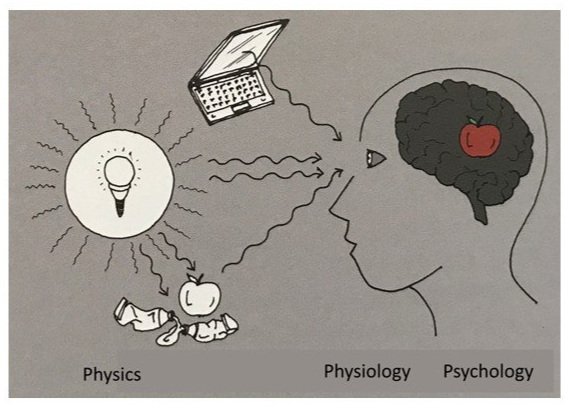Light is key for colour
Light is key for us to see colour. Although we may sometimes dream in colour, or remember our experiences of colour, most of our daily colour experiences begin with light.
Light can come to us directly, from sources that produce their own light (like the Sun, a lightbulb, a candle or a computer screen), or light can come to us indirectly, after it has interacted with some kind of object in the world (like an apple or a splotch of paint) or substance (like the sky).
Our experience of colour starts with light
Diagram courtesy of Andreas Schwarz.
When light enters our eye, it activates our visual system (which includes our eyes, brain and all the connections in between), and is decoded and interpreted as all the colours (and shapes, textures, and volumes...) we can see. Other contexts and factors like our experiences, culture and language also contribute to the way we perceive colours.
Try this!
Learn even more
We can learn even more about the relationship between light and colour when we study the spectrum. When a ray of white light passes through a prism, it is transformed into a colourful spectrum.












